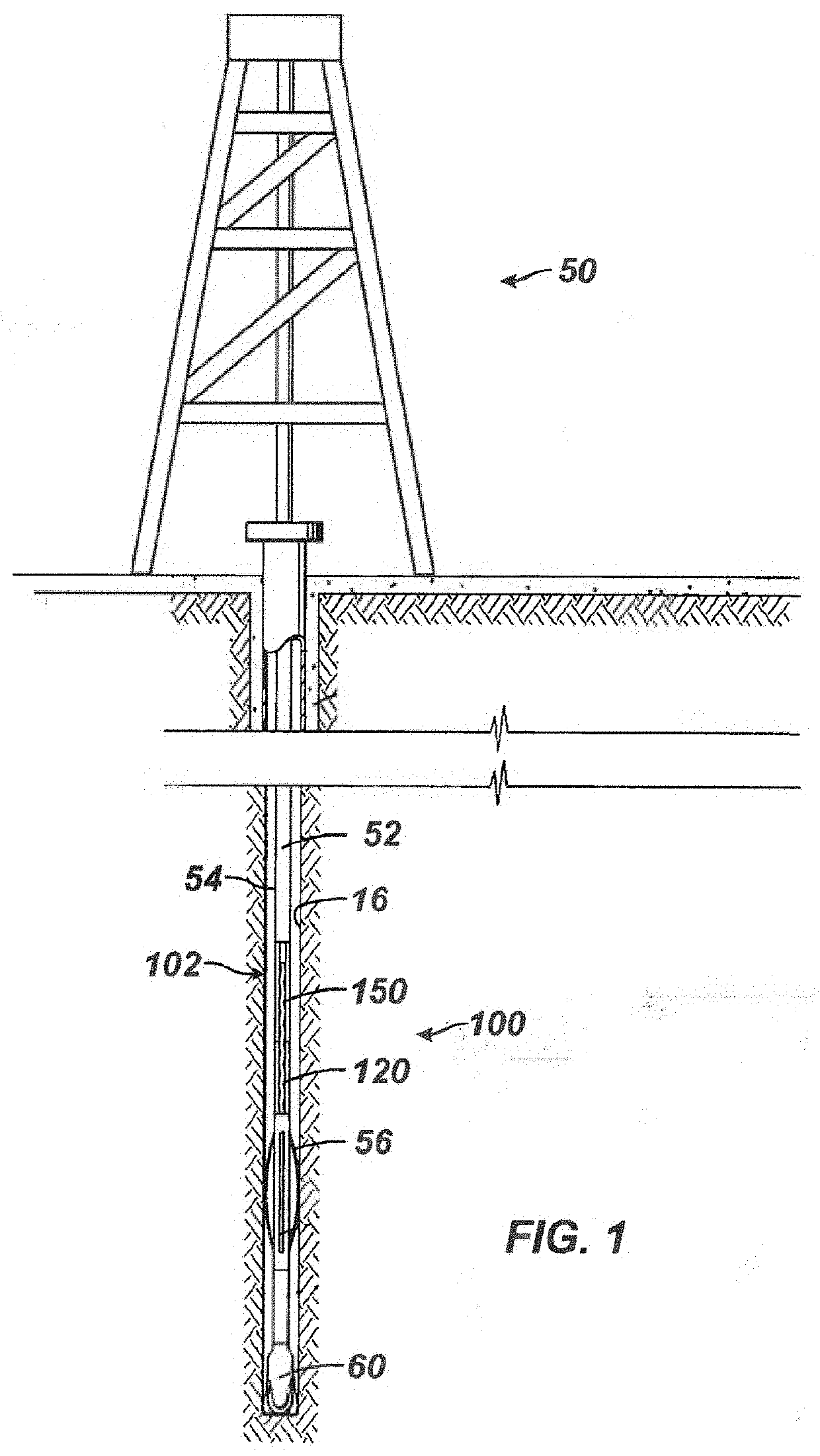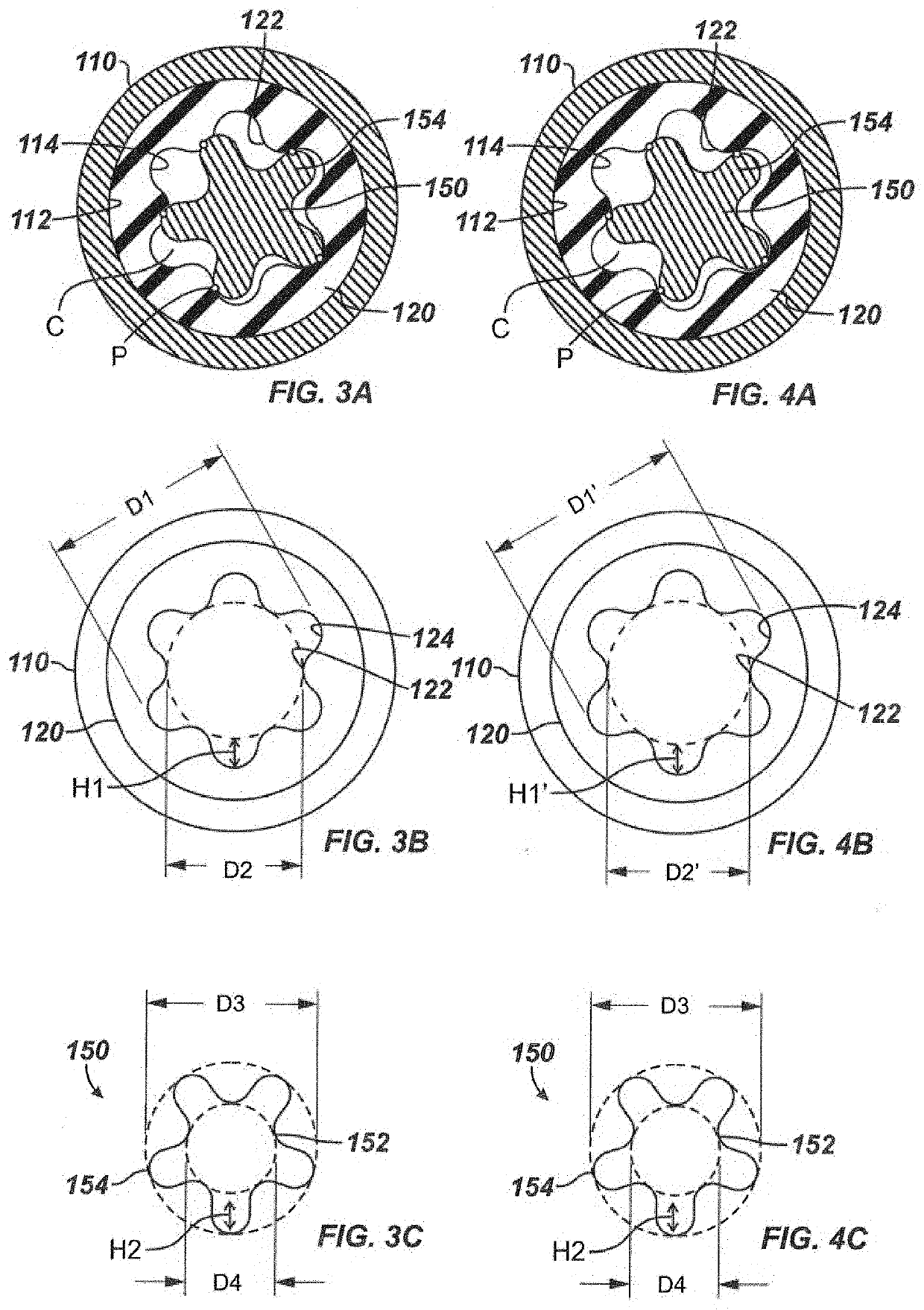Load Balanced Power Section of Progressing Cavity Device
a technology of power section and cavity, which is applied in the direction of machines/engines, liquid fuel engines, borehole/well accessories, etc., can solve the problems of increasing the interference with the rotor, elastomer of the stator to thermally expand, and power section does not carry the pressure load evenly across the complete power section, etc., to achieve better material properties of the stator lining, prolong the life of the power section, and improve the effect of material properties
- Summary
- Abstract
- Description
- Claims
- Application Information
AI Technical Summary
Benefits of technology
Problems solved by technology
Method used
Image
Examples
Embodiment Construction
[0042]A progressing cavity device of the present disclosure can be used in oil field applications to pump fluids or to drive downhole equipment in the wellbore. The device has two helical gears with an inner gear (rotor) typically rotated within an outer gear (stator), although other rotational arrangements are possible, such as a reverse arrangement. The outer gear (stator) has one helical thread or lobe more than the inner gear (rotor). In general, the device can operate as a motor through which pumped fluids flow to rotate the inner gear (rotor) within the outer gear (stator) to produce torque of a drive, such as an output shaft, transmission shaft, universal joint, or the like coupled to a cutting tool, an end mill, or a drill bit.
[0043]As shown in FIG. 1, for example, the progressing cavity device 100 can be used as a progressing cavity motor or positive displacement motor to drive a tool 60, such as a cutting tool, an end mill, or a drill bit, of a drilling assembly 50, which ...
PUM
 Login to View More
Login to View More Abstract
Description
Claims
Application Information
 Login to View More
Login to View More - R&D
- Intellectual Property
- Life Sciences
- Materials
- Tech Scout
- Unparalleled Data Quality
- Higher Quality Content
- 60% Fewer Hallucinations
Browse by: Latest US Patents, China's latest patents, Technical Efficacy Thesaurus, Application Domain, Technology Topic, Popular Technical Reports.
© 2025 PatSnap. All rights reserved.Legal|Privacy policy|Modern Slavery Act Transparency Statement|Sitemap|About US| Contact US: help@patsnap.com



